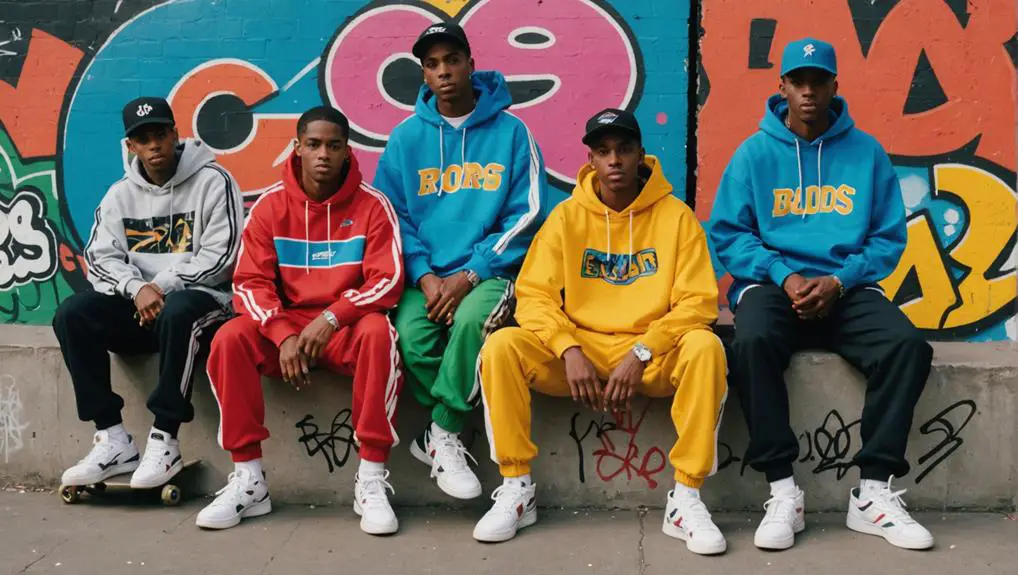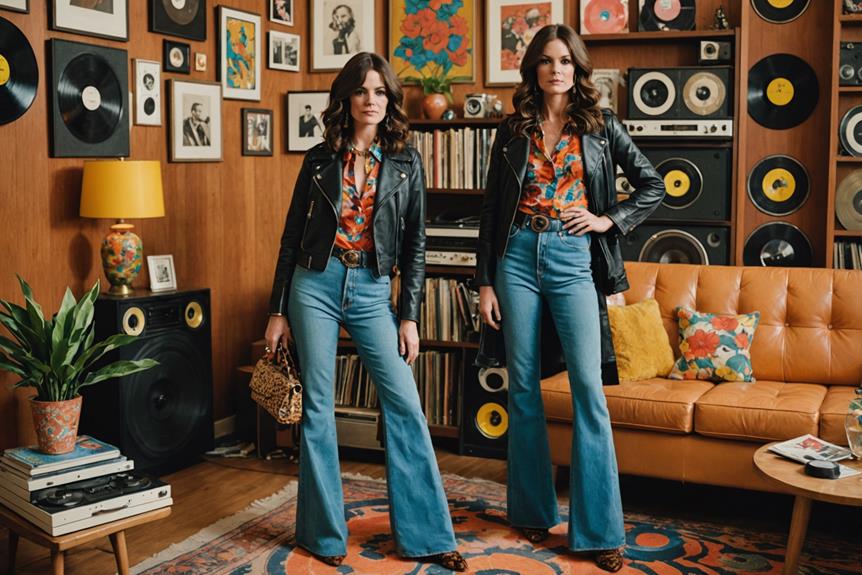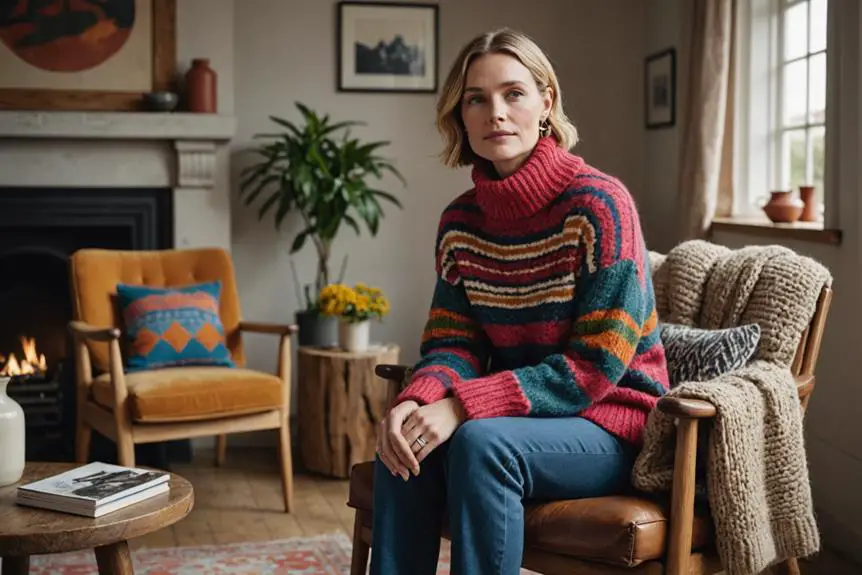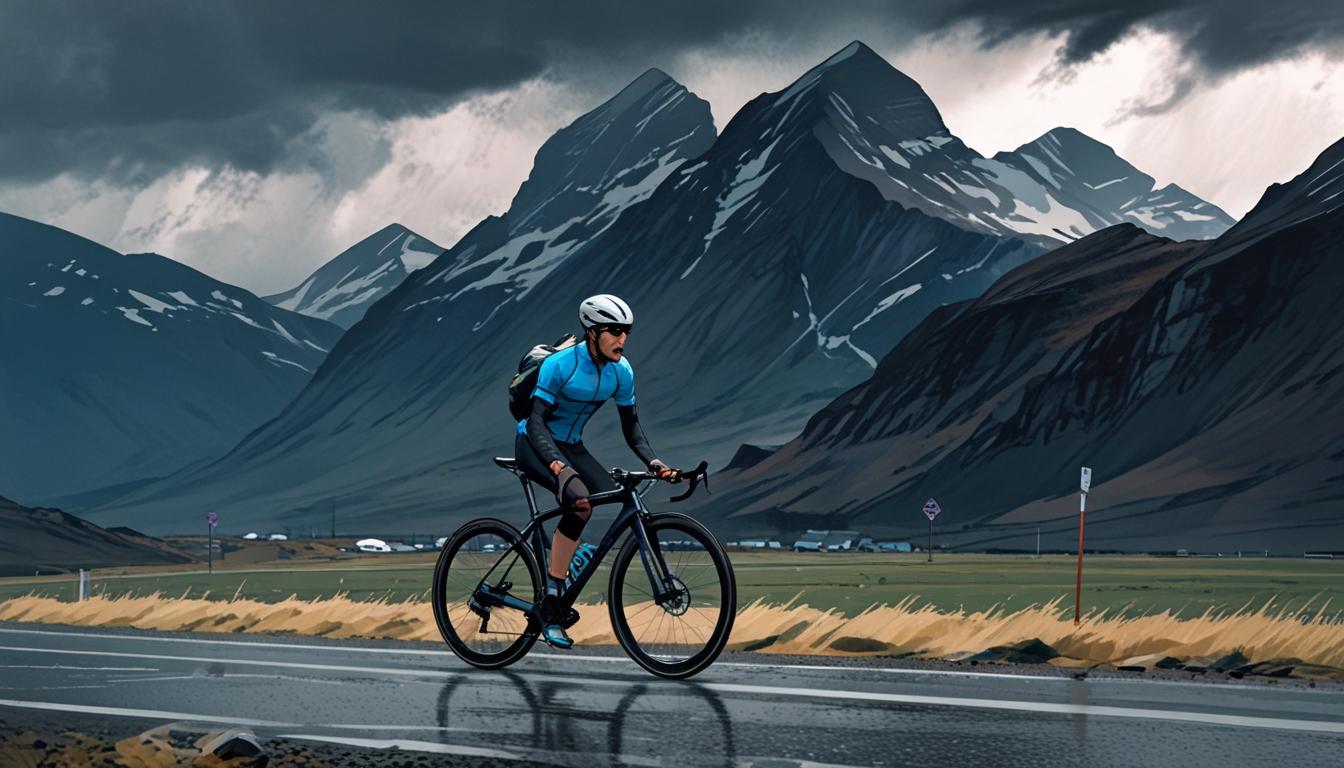In the 2000s, men's tracksuits evolved dramatically, shifting from baggy styles to fitted designs that emphasized comfort and flair. You'd find plush velour fabrics in vibrant shades, making tracksuits a staple for stylish streetwear. Brands like Fila and Adidas dominated the scene with bold logos and cohesive matching sets, transforming athletic wear into polished fashion statements. Hip-hop artists drove this trend, showcasing fitted tracksuits that blended self-expression with cultural impact. Vintage and oversized styles also made a comeback, appealing to a sense of nostalgia. There's much to explore about this stylish era and its lasting effects on today's fashion.
Evolution of Tracksuit Styles
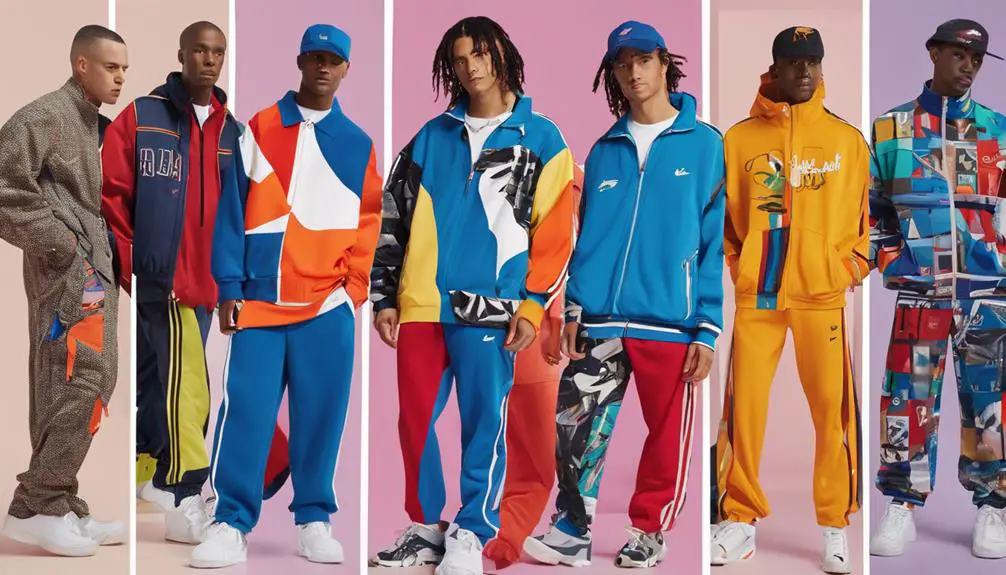
As tracksuit styles evolved throughout the 2000s, you could see a dramatic shift from the baggy silhouettes that defined hip-hop culture in the late '90s to the more fitted designs that gained popularity during the decade. The emergence of the mens velour tracksuit became a defining trend, offering a plush texture and vibrant colors that appealed to fashion-conscious men. Brands like Fila, Adidas, and South Pole capitalized on this shift, producing iconic tracksuits with bold logos and striking color combinations.
Matching sets were vital, emphasizing coordination and creating a polished look that resonated with the era's streetwear vibe. You'd often spot these styles in music videos and fashion magazines, effectively elevating their status within popular culture. The influence of celebrity endorsements, especially from hip-hop artists, played a significant role in shaping tracksuit popularity. As these figures donned fitted velour tracksuits, they set a tone that encouraged fans to embrace similar styles.
This evolution marked a move toward a sleeker athletic aesthetic, reflecting broader fashion trends while maintaining the comfort and practicality that tracksuits are known for. The mens velour tracksuit became not just a clothing choice but a cultural statement.
Cultural Impact on Fashion
Tracksuits in the 2000s didn't just reflect a shift in style; they transformed into a cultural phenomenon that greatly impacted fashion. Rooted in hip-hop culture, these garments became ubiquitous as artists donned them in music videos, driving trends and popularity. The velour tracksuit emerged as a unisex staple, symbolizing comfort and street style. You likely remember the bold colors and vibrant patterns that defined this era, making a statement wherever they were worn.
The Football Tracksuit, in particular, became a symbol of casual athletic wear, blending functionality with style. Celebrities and influencers embraced tracksuits, further embedding them into pop culture. Collaborations between music artists and fashion brands resulted in limited edition pieces, highly coveted by fans and collectors alike, which only added to their cultural significance.
Today, nostalgia for early 2000s fashion is witnessing a resurgence, fueled by social media platforms showcasing these retro styles. New generations are inspired to adopt and reinterpret tracksuits, reminding us of their lasting impact on contemporary fashion. The tracksuit's evolution from mere sportswear to a cultural icon illustrates how deeply fashion can be intertwined with societal trends and movements.
Key Brands and Designers
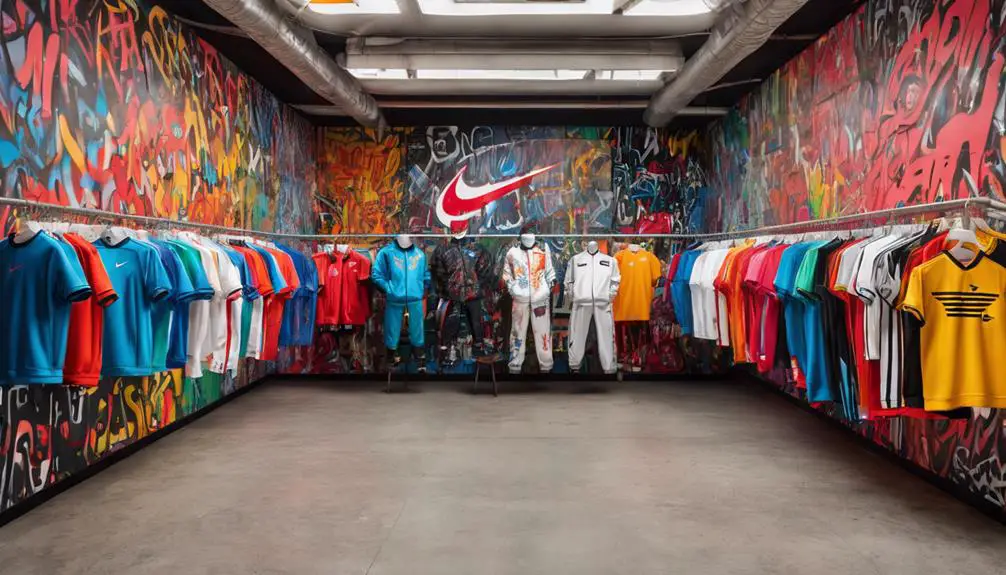
The 2000s saw a vibrant array of brands and designers shaping the tracksuit landscape, each leaving a unique imprint on the era's fashion narrative. Fila, South Pole, and Perry Ellis emerged as notable players, often utilizing velour materials and bold colors that captivated style-conscious men. Hip-hop culture played a pivotal role as brands like FUBU and Sean John embraced oversized fits and striking graphics, defining urban streetwear and creating a buzz around tracksuits.
Meanwhile, Adidas and Puma maintained their stronghold, offering athletic cuts and recognizable branding that appealed to both casual wear enthusiasts and serious athletes alike. As nostalgia surged, vintage-inspired tracksuits from the 70s and 80s made a comeback with brands like Diadora and Lotto, inviting a new generation to sport styles that felt both retro and fresh.
Towards the decade's end, designers such as Jaded London and Weekday emerged, presenting modern interpretations of tracksuits that blended contemporary aesthetics with retro influences. Whether you're rocking an XL blue tracksuit for comfort or making a bold statement with vibrant graphics, the diversity of brands and styles during the 2000s guaranteed there was something for every man's wardrobe.
Popular Trends and Patterns
With brands like Fila and South Pole influencing the scene, the 2000s saw tracksuits evolve into a canvas for vibrant self-expression. Velour tracksuits became a staple, boasting a plush texture that felt luxurious against the skin. You'd often spot them in bright colors and bold patterns, capturing the playful spirit of the era. This wasn't just fashion—it was a statement.
The hip-hop culture played a pivotal role in shaping these designs. Oversized fits became the norm, allowing for both comfort and style. Eye-catching graphics adorned the fabric, turning each tracksuit into a unique work of art. When selecting your mens size, you'd often opt for something roomier, embracing that laid-back vibe that defined the decade.
As nostalgia for the early 2000s surged, vintage tracksuits re-emerged, appealing to those who wanted to relive the flamboyance of their youth. The allure of these styles lies not just in their aesthetics but in their cultural significance. It's a reminder of a time when fashion wasn't afraid to be loud and proud, inviting you to express yourself boldly.
Tracksuits in Modern Fashion
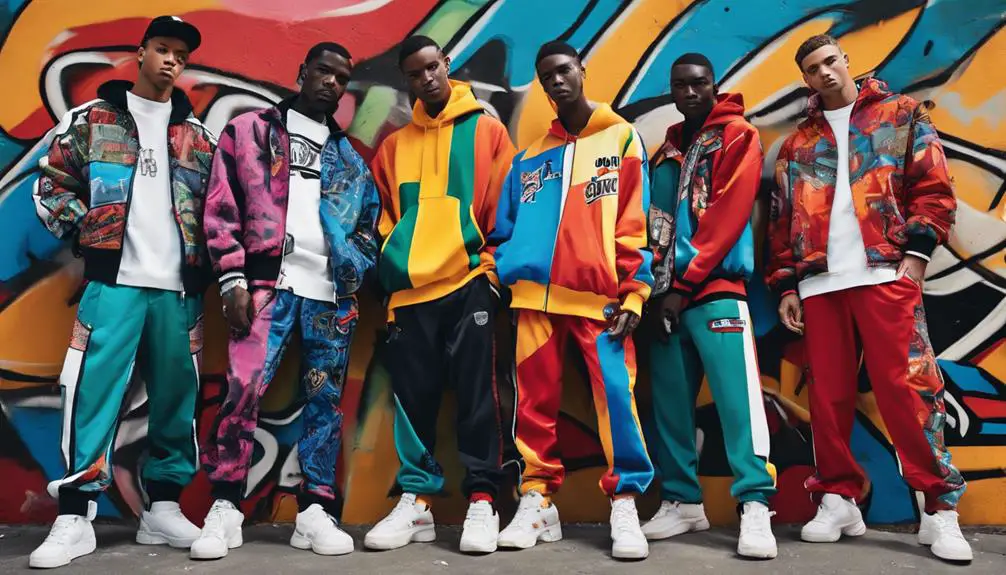
As nostalgia for the early 2000s resurfaces, modern fashion seamlessly incorporates tracksuits into its repertoire, blending comfort with style in a way that resonates with today's trends. Brands like Jaded London and Weekday are leading the charge, reviving loose-fit designs that embody the Y2K aesthetic. Streetwear culture plays a major role, making tracksuits essential for both casual and chic outfits, as evidenced by trending TikTok posts that have amassed over 1.3 million views.
The revival of velour tracksuits highlights this trend, with vintage styles from Juicy Couture and Perry Ellis gaining popularity for their unique designs and nostalgic significance. Customization options, like adding names or logos, cater to a growing desire for individuality in casual wear, allowing you to express your personal style effortlessly.
Social media is a driving force behind this tracksuit resurgence. Hashtags like #fyp and #ootd reveal a vibrant community of fashion enthusiasts showcasing their unique looks and influencing trends. In this landscape, tracksuits aren't just garments; they're a statement of comfort, nostalgia, and modern style, making them a must-have in your wardrobe.
Frequently Asked Questions
Were Tracksuits Popular in the 2000s?
Yes, tracksuits were incredibly popular in the 2000s, dominating casual fashion. Their vibrant colors and comfortable fit made them a go-to choice, especially among youth, influenced heavily by hip-hop culture and iconic music references.
What Were Men Wearing in the 2000s?
In the 2000s, you wore oversized tees, baggy jeans, and vibrant sneakers. Accessories like bucket hats and chunky watches completed your look, reflecting a blend of urban culture and casual comfort that defined men's fashion during this era.
When Were Mens Tracksuits Popular?
Men's tracksuits were most popular in the early to mid-2000s, driven by hip-hop culture and celebrity endorsements. You'd see vibrant colors and bold patterns everywhere, making them a staple in casual streetwear fashion.
What Clothing Was Popular in the 2000s?
In the 2000s, you embraced oversized tees, baggy jeans, and vibrant patterns, showcasing a laid-back vibe. Accessories like bucket hats complemented your style, reflecting the bold influences of hip-hop culture that dominated fashion during that era.
